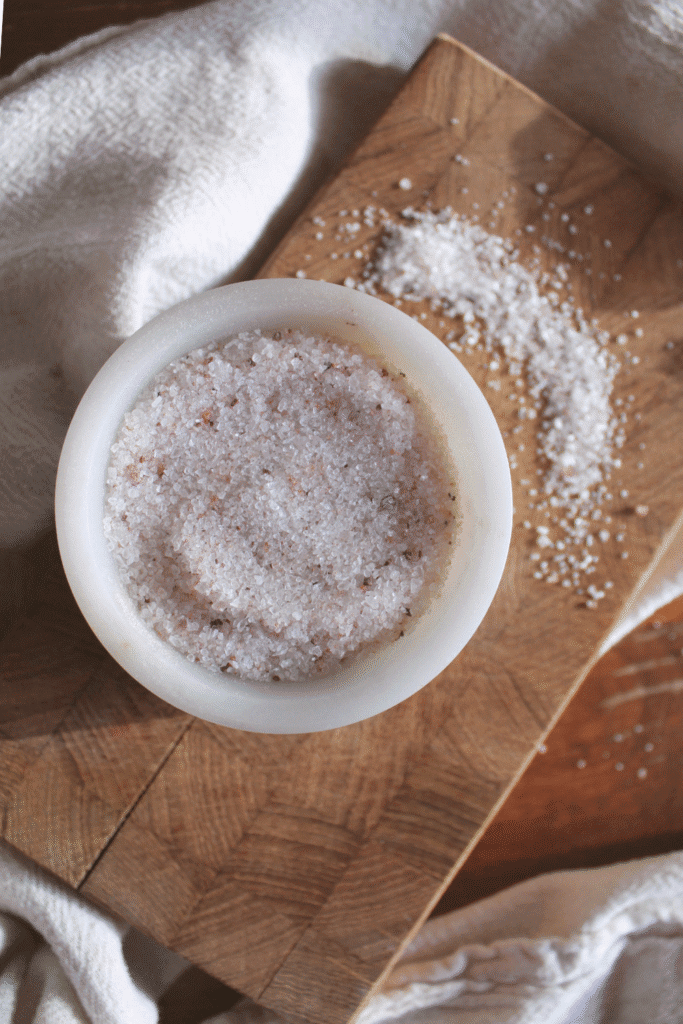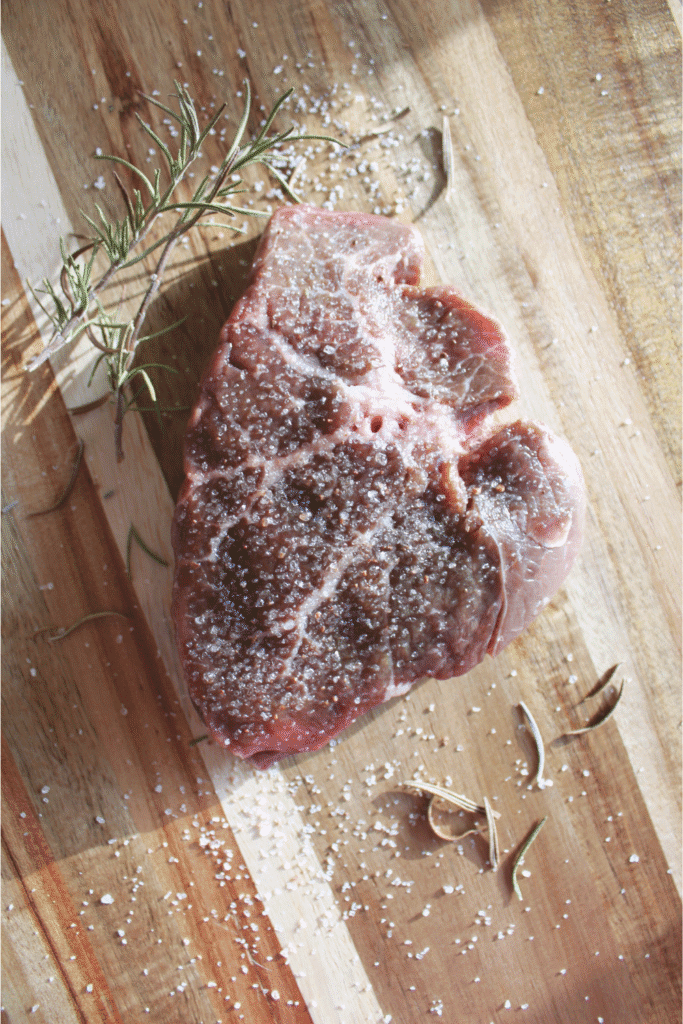SALT ISN'T THE VILLAN WE’VE BEEN TOLD IT IS
July 15, 2025
For years, salt has been blamed for everything from high blood pressure to heart disease. The advice has been loud and clear: eat less salt. But here’s the truth—salt itself isn’t the problem. What really matters is the kind of salt you’re eating and where it’s coming from.
The truth is salt isn’t the villain we’ve been told it is. Just like with fats or sugars, not all salts are created equal. The overly processed, bleached table salt found in most grocery stores is a far cry from the mineral-rich, naturally harvested salts our bodies actually need. In fact, when you choose the right kind of salt, it can support hydration, muscle function, and overall health.
In this post, we’re breaking down the real difference between refined salt and high-quality options. You’ll also learn how to use different salt textures in your cooking, why salt is crucial for homemade electrolyte drinks, and how this ancient mineral has been keeping food (and people) healthy for centuries.
Let’s give salt a second chance—it deserves it.

Explore some of my favorite recommended products to support your health journey (displayed on this page as affiliate links), and remember to always consult a healthcare professional before making any changes to your diet or lifestyle—full medical disclaimer here.
The Truth About Salt: It’s Essential
Salt often gets blamed for modern health issues like high blood pressure, but the truth is, your body needs salt to function. Sodium plays a vital role in hydration, muscle movement, nerve signaling, and even hormone balance. Without enough of it—and the trace minerals that come with real, unrefined salt—you can end up feeling fatigued, dizzy, or dehydrated, even if you’re drinking plenty of water.
So where does the fear come from? Mostly from the kind of salt found in processed foods. Highly refined table salt and the sodium used in frozen meals, canned goods, and fast food are stripped of their natural minerals and often paired with sugar, preservatives, and unhealthy fats. That’s the combination that can raise blood pressure—not salt in its natural form.
It’s easier to tell people to avoid salt than it is to avoid processed food, most Americans don’t truly know what the term processed or unrefined means. Mineral-rich salts contain potassium, magnesium, and calcium, which actually help regulate blood pressure and support overall balance in the body. The problem isn’t salt—it’s what we’ve done to it.
Salt Through History: A Desired Mineral
Throughout history, salt has been treasured by every culture. Ancient civilizations used it not just for flavor, but for preserving food, healing wounds, and even as currency. Our ancestors didn’t fear salt—they valued it as a vital mineral for survival. In fact, traditional diets around the world consistently included natural salt sources long before processed foods and modern health warnings came along.
What Happens When We Don’t Get Enough Salt + Minerals?
Cutting out salt—or relying only on refined, bleached table salt—can deprive your body not just of sodium, but also of dozens of other essential trace minerals. Quality salts contain naturally occurring minerals like magnesium, potassium, calcium, and zinc, which all play vital roles in hydration, nerve signaling, hormone production, and muscle recovery.
When your body is low on these minerals, you might notice:
1. Brain Fog & Fatigue
Sodium helps regulate fluid balance and blood flow, including to your brain. Without enough of it, many people experience headaches, brain fog, dizziness, and that “wired but tired” feeling.
2. Dehydration & Electrolyte Imbalance
Salt is one of the body’s key electrolytes, working alongside potassium and magnesium. Drinking plain water without replenishing minerals can actually dilute your electrolyte levels and leave you more dehydrated—especially after sweating, working out, or being in the heat.
3. Muscle Cramps & Weakness
Ever get leg cramps after a hot day or tough workout? That’s often a sign of sodium (and magnesium) depletion. Salt helps muscles contract and relax properly.
4. Cravings & Hormonal Disruption
Your body craves real salt when it’s lacking minerals. But if you’ve been taught to avoid salt, you might ignore the signals. Chronic low sodium levels can even affect cortisol, insulin, and thyroid hormone balance over time.
Over time, mineral deficiencies can leave you feeling chronically drained—even if you’re eating well and drinking plenty of water. The solution isn’t to avoid salt altogether, but to upgrade the kind of salt you’re using. Real, unrefined salt supports your body far better than the stripped-down version hiding in most processed foods.
Real Salt vs. Table Salt: Why Quality Matters
Refined Salt
The problem with typical table salt isn’t just what’s missing—it’s what’s been added. During processing, salt is bleached to make it bright white and “uniform,” but that also strips away any naturally occurring trace minerals your body needs. What’s left is almost pure sodium chloride—without the balancing minerals like potassium or magnesium that help your body use sodium properly.
To keep it from clumping, manufacturers also add anti-caking agents like sodium ferrocyanide, silicon dioxide, or even aluminum derivatives. While approved for consumption in small amounts, these ingredients don’t add any nutritional value—and some people are sensitive to them. Over time, regularly consuming these additives can burden the body, especially if you’re trying to detox, support thyroid health, or reduce heavy metal exposure.
Unrefined Salt
In contrast, real, unrefined salt—like Redmond Real Salt—is harvested from ancient sea beds and left in its natural state. It contains over 60 trace minerals, giving it a slightly pink or speckled appearance and a more complex flavor. These minerals help the body absorb and use the sodium properly, unlike refined salt which can create imbalance and water retention when consumed in excess.
Although it’s easy to get tricked into a product that looks safer but might not be what it seems. When shopping for salt, it’s easy to get overwhelmed be the options – Himalayan, Celtic, sea sal, kosher, iodized. While Himalayan and Celtic salts are often marketed as natural, they are not always the cleanest options. Himalayan salt is mined in Pakistan and may contain trace heavy metals, Celtic salt is also showing signs of heavy metals and is harvested from coastal waters, which can carry microplastics and pollutants.
What does Kosher & Iodized Mean?
Kosher salt refers to the texture—larger, flaky crystals traditionally used for koshering meat—not the quality or purity. Some kosher salts are still highly processed, so it’s important to look for unrefined options if you want the health benefits. It may or may not be certified kosher (by Jewish dietary standards), even though it’s labeled “kosher.”
Iodized salt, on the other hand, is table salt with synthetic iodine added to prevent deficiency. While iodine is important, most people get enough from whole foods like eggs, dairy, and seafood. Iodized salt is typically bleached, stripped of minerals, and mixed with additives, which is why I choose unrefined, mineral-rich salts instead.
Choosing Salt at the Store
A healthy salt should look natural—often off-white, gray, pink, or speckled depending on its mineral content. It won’t be pure white or uniform in texture. Look for terms like “unrefined,” “no additives,” “no anti-caking agents,” or “trace minerals intact” on the label. One of the best examples is Redmond Real Salt, which comes from an ancient underground seabed in Utah. It’s naturally rich in over 60 trace minerals, mined in the U.S., and tested for purity and safety. When it comes to salt, simplicity, sourcing, and transparency matter most.

Fine vs. Coarse Salt: How I Use Each
When it comes to everyday salt, I mainly stick to just two types: fine and coarse—both unrefined and mineral-rich.
I use fine salt (like Redmond Real Salt’s fine version) for baking, seasoning as I cook, and adding to drinks—especially homemade electrolyte mixes. The fine texture dissolves easily into batters, broths, and smoothies, making it super versatile.
For cooking meats, roasting veggies, or finishing a dish, I reach for coarse salt. The larger crystals give a nice texture and help draw out moisture when used on proteins. I also love using it as a finishing salt—it adds a noticeable pop of flavor on top of foods.
There’s also a coarse grind made specifically for salt grinders, which has even larger granules. These are great if you like to grind fresh salt onto your food and control the texture yourself.
One thing to watch out for: when a label just says “table salt,” it almost always means refined salt. That kind is usually bleached, stripped of minerals, and mixed with anti-caking agents—not something I want in my kitchen. Choosing real, unrefined salt makes all the difference in both flavor and how it supports your health.
Salt Recommendations I Trust
Redmond Real Salt – Fine
Great for baking, blending into soups, or stirring into water. It’s unrefined, mineral-rich, and easy to use daily.Redmond Real Salt – Kosher Coarse
Ideal for seasoning meats, veggies, or finishing a dish. I also keep this in a pinch bowl near the stove.Redmond Real Salt – Grinder Refill
These larger crystals are perfect if you like freshly ground salt with full flavor and texture
Healthy & Smart Ways to Use Salt
Add a Pinch to Your Morning Water
First thing in the morning, I add a pinch of fine real salt to a glass of filtered water with a squeeze of lemon. It’s a simple, natural electrolyte drink that helps wake up your cells, boost energy, and rehydrate after sleep.
DIY Electrolyte Drinks
On hot Texas days, when I’ve been outside gardening or working on the homestead, I’ll make a homemade electrolyte mix:
Water
Pinch of unrefined salt
Lemon, lime, orange or pineapple juice.
A touch of raw honey or coconut water (optional)
It’s way better than store-bought drinks full of dyes and fake flavors.
Sprinkle on Fruit
Try a tiny sprinkle of salt on fresh watermelon, cantaloupe, or citrus—it brings out the sweetness and helps your body absorb the natural sugars and minerals better. (This is especially refreshing on a hot afternoon.)
In Natural Cleaning Products
Since I’m all about non-toxic living, I sometimes use fine or coarse salt in homemade cleaners. It acts as a gentle abrasive for scrubbing sinks or cast iron, and it pairs well with baking soda and vinegar for deodorizing.
Also, I almost always use high quality salt in cooking meats, soups and veggies and in baking.
Salt Isn’t the Villain—It’s the Source That Matters
For years, we’ve been told to fear salt—but the truth is, real salt is essential to our health. It hydrates, nourishes, supports hormones, and even adds depth to the food we lovingly prepare at home. The issue isn’t with salt itself—it’s with the overly processed, refined table salt that’s become standard in most kitchens and packaged foods.
By choosing mineral-rich, unrefined salt like Redmond Real Salt, and using it with intention, you’re not just seasoning your food—you’re replenishing your body. Whether it’s a pinch in your morning water, a sprinkle on your dinner, or a tool in your natural cleaning and preserving routine, salt can be a powerful part of a whole, healthy lifestyle.
Don’t be afraid of it—just get to know the right kind of salt, and let your body (and your food) benefit from what nature intended.
